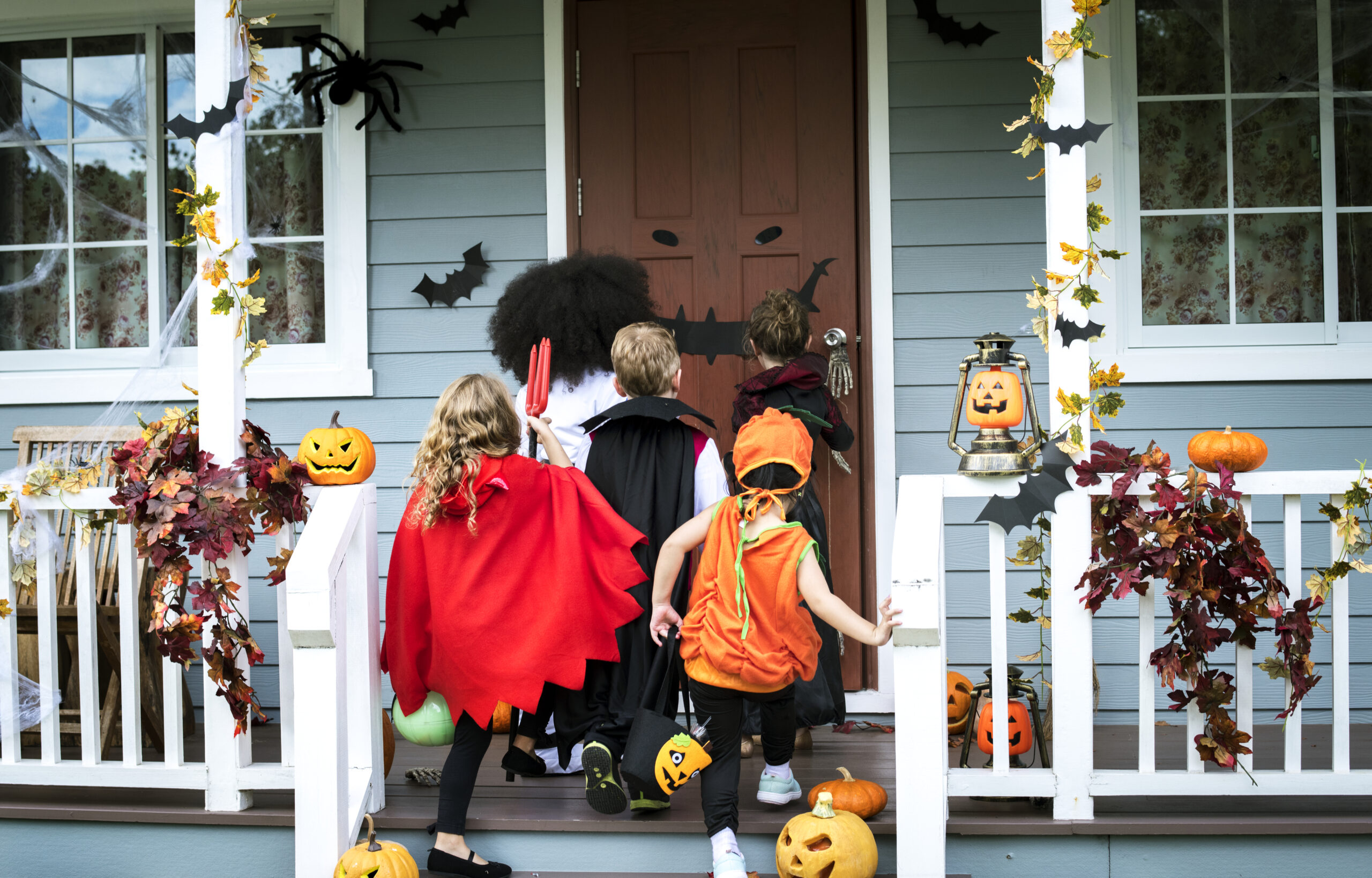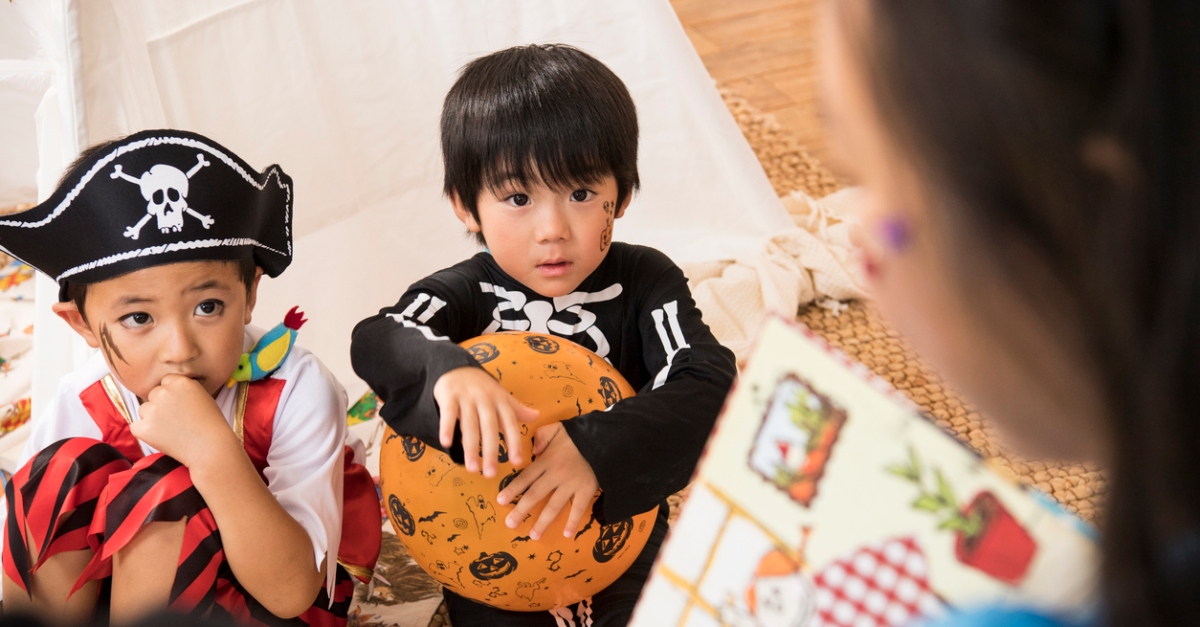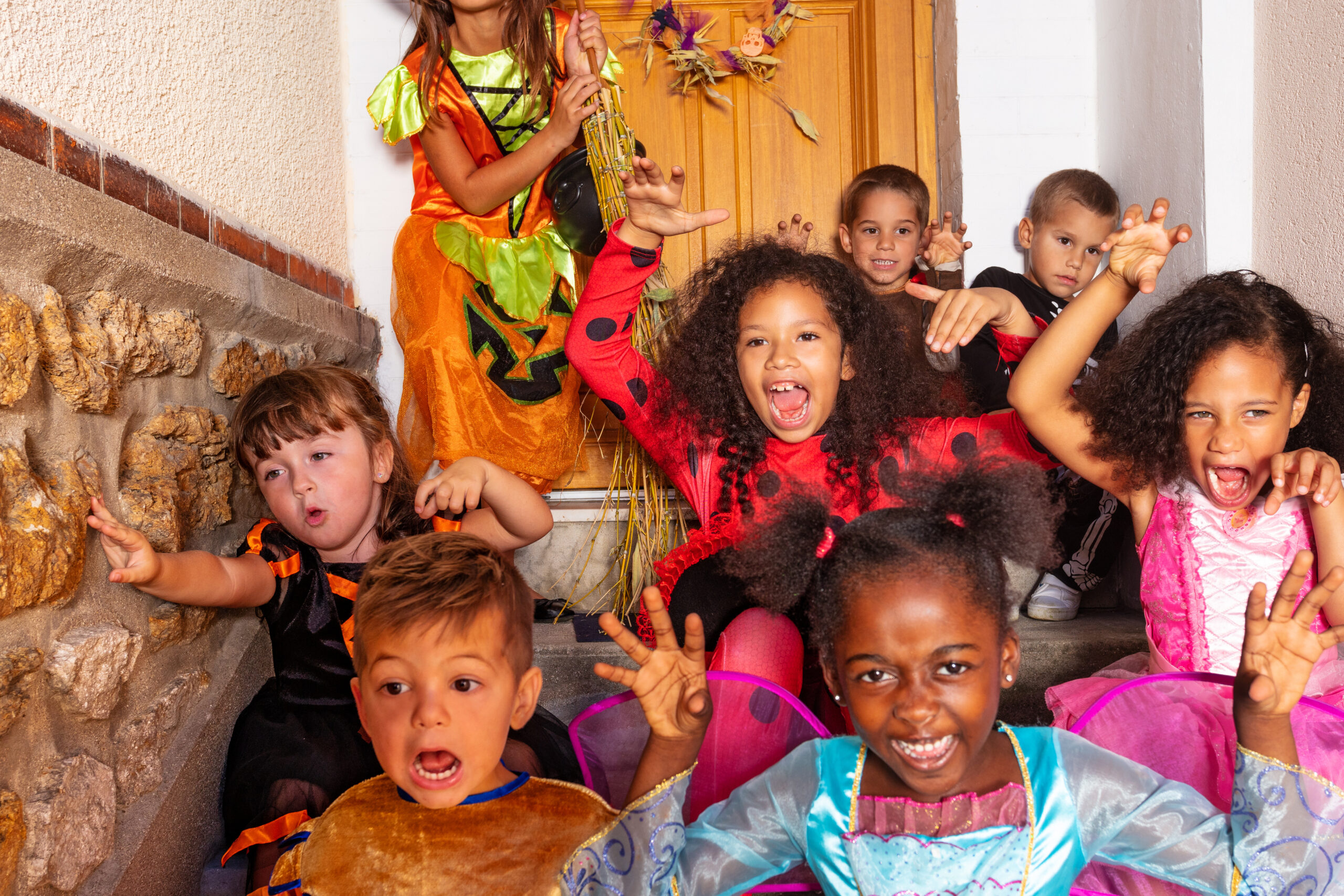
Halloween is a magical time for kids and families alike. As you dress up in costumes, go trick-or-treating, pass out candy to neighborhood kids, and participate in other fun activities, it’s important to keep in mind that not all kids are created equally.
While your child might be able to eat any food at the store, some kids have strict allergies and therefore can’t enjoy Halloween as much.
Your child might be able to walk in a typical way, while other children use wheelchairs or have poor gross motor skills, making it challenging to reach your door to access Halloween treats.
The best way to ensure all kids can enjoy Halloween is to be more inclusive in your celebrations.
Here are some considerations to keep in mind.
Communication Skills Vary
“Trick-or-treat.”
“Thank you.”
“I want Skittles.”
These are common Halloween-related phrases you’re likely used to hearing, but keep in mind that some children don’t have the communication skills to say these things or anything at all.
Some kids who come to your home are nonverbal and can’t communicate or might have a receptive language delay and are therefore unable to understand what you’re saying to them. So don’t assume they’re being rude or pressure them to answer you by asking the same question repeatedly or saying the same thing louder.
Children who are deaf even use sign language to communicate, so you could possibly learn the American Sign Language (ASL) signs for happy Halloween or other basic phrases used on this day.
Some Kids Have Food Allergies
One in 13 children in the US have a food allergy. That can make Halloween, which is centered around sweet treats, a challenge. So you consider these kids when you are purchasing treats to celebrate this special night.
Many typical Halloween candies are made with nuts, milk, egg, soy, and wheat, which are common allergies.
To show you are actively inclusive of kids with special allergy needs, you can participate in the Teal Pumpkin Project, which is a food allergy awareness campaign. Essentially, when you place a teal pumpkin on your porch, you’re communicating that your treats are considerate of those with food allergies.
It’s a good idea for you to include not just treats that are sensitive to food allergies but non-food treats as well — even if it’s a pack of pencils or sticker sheets. Some children have feeding tubes, diabetes, or other conditions that make food challenging to consume or require a very strict diet, so giving them the opportunity to celebrate can make their day.
Don't Question Age

The age you see physically and the developmental age of a child can vary. So the next time you see a child who appears older coming to trick-or-treat at your house, don’t question whether it’s appropriate.
They might be at an age where developmentally it’s appropriate for them to be dressed in a costume and go trick-or-treating. Or they might choose not to wear a costume and still want to trick-or-treat.
By questioning their presence, you are bringing light to and reminding them of their developmental status, which can take the fun out of such a special evening.
Accessibility Needs Differ
Wheelchairs. Walkers. Strollers. Slow gait.
Depending on the child, their method of getting around can make trick-or-treating challenging.
Not all kids can make it to your front porch or up the stairs to receive their treat, so consider placing a treat bowl closer to the sidewalk for easier accessibility when kids have limited mobility.

Another consideration is to be patient when kids don’t move as quickly as others or don’t have the gross or fine motor skills to easily grab treats out of the bowl.
Patience and understanding is key.
Consider Sensory Issues
One in six children have sensory issues in the United States.
That’s why a holiday like Halloween — full of surprises, darkness, spooky sounds, and lights — can be triggering.
In the name of inclusivity, consider limiting some triggers such as your fog machine, strobe lights, or loud sound effects. Alternatively, you can put up a warning about what your house includes so parents can decide not to come to your home in order to prevent triggering their child.

If children appear scared or taken aback by the conditions of your home, don’t laugh or look at them as though something’s wrong. Instead, be understanding and sensitive to the fact that they may be overwhelmed.
Also, some children may not be able to wear costumes due to their sensory sensitivities, so if a child shows up without a costume or partially dressed in their costume, don’t question it.







